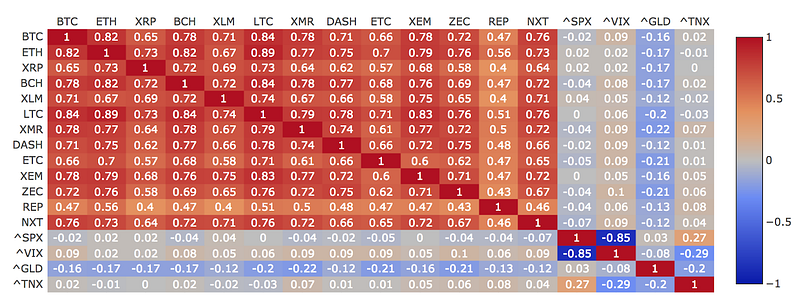.jpg)
 Source: Sifr
Source: Sifr Here’s the thing. It doesn’t really matter what caused the crypto sell-off if narratives are always being created after events happen, instead of price action following market narratives that were already created.
While the global equity market selloff may have been swift and violent, you certainly couldn’t call it “unexpected”. There have been risks piling up for years caused by low-interest rates, government intervention, and massive personal, corporate, and government debt accumulation. Throughout this time, there has been no shortage of market hypotheses stating that when rates finally begin to rise, and the central bank stimulus begins to be withdrawn, the “everything bubble” will unwind. Of course, only time will tell if this recent hiccup in global equities is the start of a much larger drawdown, or an opportunity to “ buy the dip ”. But the narrative has been established — rising rates and stimulus withdrawals are huge headwinds to global stocks.
Which brings us back to crypto. The only persistent narrative in recent months has been the downfall of ICOs but the subsequent pickup in blockchain equity raises, and the constant influx of Fortune 500 companies into crypto. There were no calls for a “correction” in crypto prices outside of normal short-term technical analysis, and the persistent “ crypto is going to zero ” Twitter banter (which has been going on since Bitcoin was below $100). Last week’s move really did catch the market by surprise. And in our opinion, that’s fine. Not every move needs to be associated with a reason, which is why we continue to shout about proper risk management over everything else. The entire crypto space consists of new technology that probably should not offer real-time pricing and liquid exchanges. There are long periods of inactivity on many newly built protocols and platforms that underpin the tokens that trade, and each blockchain startup and decentralized project comes with plenty of development and network hiccups. If every private company in Silicon Valley gave daily, transparent updates into their company’s financial health or future business plans, their equity would move up and down in 10% increments as well. And you wouldn’t require a reason — it would just be par for the course when investing in young companies and emerging technologies.

And That’s Our Two Satoshis!
Disclaimer: This commentary is provided as general information only and is in no way intended as investment advice, investment research, legal advice, tax advice, a research report, or a recommendation. Any decision to invest or take any other action with respect to any investments discussed in this commentary may involve risks not discussed, and therefore, such decisions should not be based solely on the information contained in this document. Please consult your own financial/legal/tax professional.
Statements in this communication may include forward-looking information and/or may be based on various assumptions. The forward-looking statements and other views or opinions expressed are those of the author, and are made as of the date of this publication. Actual future results or occurrences may differ significantly from those anticipated and there is no guarantee that any particular outcome will come to pass. The statements made herein are subject to change at any time. Arca disclaims any obligation to update or revise any statements or views expressed herein. Past performance is not a guarantee of future results and there can be no assurance that any future results will be realized. Some or all of the information provided herein may be or be based on statements of opinion. In addition, certain information provided herein may be based on third-party sources, which is believed to be accurate, but has not been independently verified. Arca and/or certain of its affiliates and/or clients may now, or in the future, hold a financial interest in investments that are the same as or substantially similar to the investments discussed in this commentary. No claims are made as to the profitability of such financial interests, now, in the past or in the future and Arca and/or its clients may sell such financial interests at any time. The information provided herein is not intended to be, nor should it be construed as an offer to sell or a solicitation of any offer to buy any securities, or a solicitation to provide investment advisory services.
These Stories on Market Recap